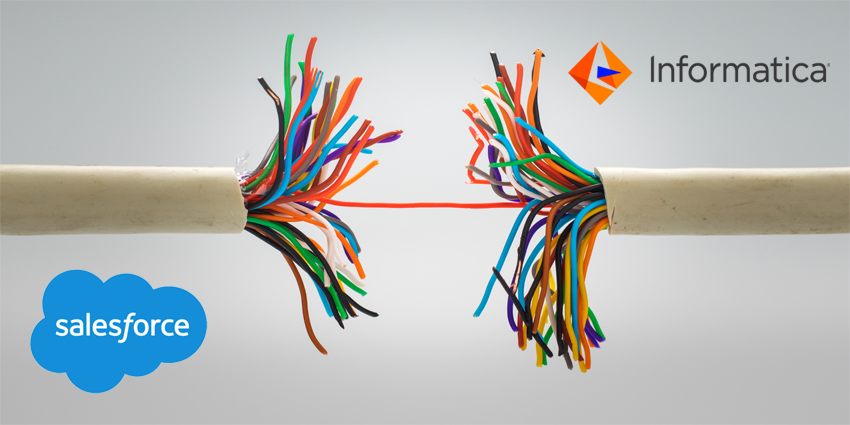As Salesforce evolves its Service Cloud CRM platform, it continuously adds new CCaaS tools.
Last year, these additions included Service Cloud voice, digital engagement, and omnichannel routing – as its evolution ramped up.
Now, Service Cloud may offer everything an SMB, with few specialist requirements, needs to run an efficient contact centre.
However, the ramp-up has had little impact on mid-market and enterprise contact centres so far.
Why? Because those contact centre deployments tend to be very complicated, with lots of application integrations and specialist knowledge required.
As such, larger contact centres typically are sticking with specialist vendors for CCaaS.
Nevertheless, these businesses may consider converging their contact centre with Salesforce once its CCaaS proposition evolves.
With this in mind, many will pursue a CCaaS vendor that offers more than a Salesforce integration but additional flexibility, support, and specialist Salesforce expertise.
How Does a Salesforce-CCaaS Integration Work?
CCaaS vendors have developed integrations with Salesforce using its trusty open CTI connector for many years. While Salesforce is not advancing the solution, it remains a viable option.
As Agam Kohli, Director of CX Solutions and Engineering UK&I at Odigo, tells us:
Unless the business wants to leverage Salesforce’s latest Einstein AI innovations, the CTI will cover likely cover its needs.
Through this integration, the CCaaS vendor will typically provide the fundamental desktop environment, digital channels, routing, and base technologies to run a contact centre.
However, there is also the opportunity for a Service Cloud voice integration. With this, contact centres can harness Service Cloud for their base capabilities. The CCaaS provider then augments the CRM with specialist capabilities – including telephony.
Such a possibility became available after the launch of Service Cloud voice, with Salesforce sending out the same set of APIs to its CCaaS partners to connect their solutions to the CRM.
As a result, all of Salesforce’s CCaaS partners, including Odigo, Genesys, and AWS, offer the same Service Cloud voice integration.
Nevertheless, there are differentiators. Contact centres must remain wary of these when picking a CCaaS partner.
What to Look for In a CCaaS Partner
When considering a CCaaS partner – whether integrating with Salesforce or not – there are many considerations to mull over.
For starters, would the business prefer a public, private, or hybrid cloud? Which channels does it support? Does it offer services that reach all my locations across the globe?
Another critical consideration: does it integrate with essential enterprise technologies? For many, a Salesforce CRM is likely the first solution that springs to mind.
Thankfully, the answer for the vast majority is a resounding “yes!” Nevertheless, some offer a more attractive integration than others.
Here are three things to look out for when comparing Salesforce-CCaaS integrations.
1. Flexibility
“Customers should work with a CCaaS vendor that gives them a choice in their CCaaS integration and can support their future CX ambitions,” says Kohli.
Indeed, many existing customers are still using open CTI, hoping they might eventually move to Service Cloud as it fleshes out its CCaaS proposition.
As such, they will look for assurances from their CCaaS vendor that they will not lock them in.
Moreover, they will want to work with a CCaaS vendor that takes them through this journey seamlessly and without pain.
Such a partner may then help add value through specialist CCaaS tools in the future.
2. Support
Consultants that help to deploy Salesforce CRM solutions and CCaaS platforms vary significantly in their expertise.
Indeed, businesses that typically support Salesforce implementations lack contact centre know-how. Meanwhile, contact centre consultants are often unfamiliar with the broader Salesforce ecosystem beyond CRM.
After making this point, Kohli states:
The key is to find vendors with an ecosystem of partners specialising and experienced in both contact centre and Salesforce, especially for large enterprise deployments.
3. The Commercial Model
A lot of vendors still use an agent license commercial model. Yet, for larger enterprises, a usage or interaction-based cost model – which is much more scalable – will likely be much more economical.
As such, always seek a provider with an agile, consumption-based pricing model.
Move Ahead With Odigo
Odigo – a market leader in CCaaS, according to ISG – provides open CTI and Service Cloud voice integrations. As such, it offers flexibility.
Moreover, its parent company Capgemini has centres of excellence for Odigo and Salesforce. As a result, it understands how to marry the technologies, secure the benefits of both, and provide the best support.
Finally, Odigo offers a usage-based pricing model, delivering commercial benefits.
These advantages make Odigo the ideal CCaaS partner for many Salesforce-driven businesses.
To discover more about its Salesforce solutions, visit Odigo’s website.







